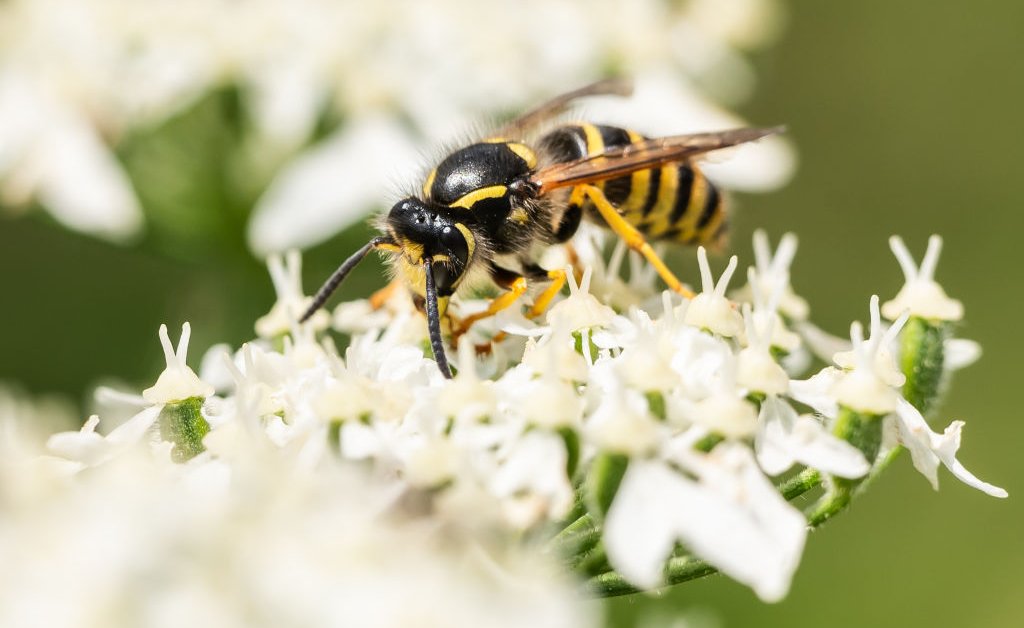Understanding The Link Between Climate Change And Summer Insects

Welcome to your ultimate source for breaking news, trending updates, and in-depth stories from around the world. Whether it's politics, technology, entertainment, sports, or lifestyle, we bring you real-time updates that keep you informed and ahead of the curve.
Our team works tirelessly to ensure you never miss a moment. From the latest developments in global events to the most talked-about topics on social media, our news platform is designed to deliver accurate and timely information, all in one place.
Stay in the know and join thousands of readers who trust us for reliable, up-to-date content. Explore our expertly curated articles and dive deeper into the stories that matter to you. Visit Best Website now and be part of the conversation. Don't miss out on the headlines that shape our world!
Table of Contents
The Buzz is Getting Louder: Understanding the Link Between Climate Change and Summer Insects
Summer. The season of sunshine, vacations, and… an overwhelming abundance of insects. From buzzing bees to chirping crickets, the soundscape of summer is largely defined by its insect population. But lately, the buzz is getting louder, and the patterns are shifting. This isn't just anecdotal; a clear link exists between climate change and the changing behavior and distribution of summer insects. Understanding this connection is crucial for predicting and mitigating the ecological impacts that are already unfolding.
Rising Temperatures and Shifting Ranges
One of the most significant impacts of climate change on summer insects is the alteration of their geographical range. Warmer temperatures allow species that were previously confined to warmer climates to expand their territories northward and to higher altitudes. This can lead to:
- Increased competition: Native insect species may struggle to compete with newly arrived, more adaptable species, potentially leading to population declines or even extinction.
- Disrupted ecosystems: The introduction of new insect species can disrupt established predator-prey relationships and plant-pollinator interactions, causing cascading effects throughout the ecosystem.
- Pest outbreaks: Warmer temperatures can also accelerate the life cycles of some insect pests, leading to increased frequency and severity of infestations in agriculture and forestry. Think increased damage from bark beetles or devastating crop losses due to increased aphid populations.
For example, the range of the southern pine beetle, a major pest of pine forests, has expanded significantly due to milder winters and longer growing seasons associated with climate change. This expansion has led to widespread tree mortality across North America. [Link to relevant scientific study on Southern Pine Beetle range expansion].
Altered Life Cycles and Increased Abundance
Climate change isn't just shifting where insects live; it's also changing when they live. Longer, warmer summers mean extended breeding seasons for many insect species, leading to:
- Increased population densities: Higher reproductive rates can result in significantly larger populations of certain insects, potentially exacerbating pest problems and impacting human activities.
- Asynchrony between species: Changes in the timing of insect life cycles can disrupt delicate ecological balances. For example, if a butterfly species emerges earlier in the spring due to warmer temperatures but its host plant doesn't, the butterfly population may suffer.
This phenomenon, known as phenological mismatch, is a significant concern for conservation biologists. [Link to article on phenological mismatch].
The Impact on Pollinators and Beyond
The changes aren't limited to pest insects. Pollinators, such as bees and butterflies, are also affected. While warmer temperatures might seem beneficial, extreme heat can be detrimental to pollinators, reducing their foraging efficiency and impacting crop yields. The changing distribution of pollinators can also have significant consequences for plant reproduction and ecosystem health.
What Can We Do?
Addressing the link between climate change and summer insects requires a multifaceted approach:
- Mitigation of climate change: Reducing greenhouse gas emissions is paramount to slowing down the rate of warming and mitigating the impacts on insect populations.
- Conservation efforts: Protecting and restoring habitats is crucial for providing insects with the resources they need to adapt to changing conditions.
- Research and monitoring: Continued research is needed to better understand the impacts of climate change on insect populations and to develop effective conservation strategies.
The increased abundance and altered behavior of summer insects are clear indicators of a changing climate. By understanding these connections and taking proactive steps, we can help protect both insect populations and the ecosystems they support. Let's work together to ensure a future where the summer buzz is a harmonious symphony, not a cacophony of ecological distress.

Thank you for visiting our website, your trusted source for the latest updates and in-depth coverage on Understanding The Link Between Climate Change And Summer Insects. We're committed to keeping you informed with timely and accurate information to meet your curiosity and needs.
If you have any questions, suggestions, or feedback, we'd love to hear from you. Your insights are valuable to us and help us improve to serve you better. Feel free to reach out through our contact page.
Don't forget to bookmark our website and check back regularly for the latest headlines and trending topics. See you next time, and thank you for being part of our growing community!
Featured Posts
-
 Ellen De Generes Public Grief A Family Loss And A Heartbreaking Farewell
May 22, 2025
Ellen De Generes Public Grief A Family Loss And A Heartbreaking Farewell
May 22, 2025 -
 Church Break In Two Boys Face Charges After Desecration Incident
May 22, 2025
Church Break In Two Boys Face Charges After Desecration Incident
May 22, 2025 -
 Taylor Jenkins Reids Path To Literary Stardom A Case Study
May 22, 2025
Taylor Jenkins Reids Path To Literary Stardom A Case Study
May 22, 2025 -
 Ubisoft Milan Expands Rayman Franchise Open Positions Available
May 22, 2025
Ubisoft Milan Expands Rayman Franchise Open Positions Available
May 22, 2025 -
 Insight Editions And Tarantino Behind The Scenes Look At 10 Iconic Films
May 22, 2025
Insight Editions And Tarantino Behind The Scenes Look At 10 Iconic Films
May 22, 2025
